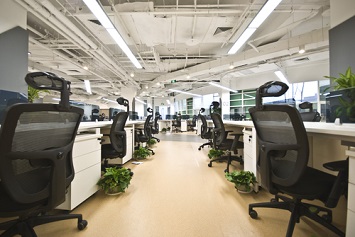Since humans first appeared on the planet, our lives have been heavily dictated by the natural rhythms of the day/night cycle. The ability to control fire allowed our ancestors to extend certain daytime and work activities into the evening, but it wasn’t until the invention of modern electrical lighting that people were able to shift their work lives indoors. Until recently, most facilities deployed fluorescent lighting, with the goal of affordable, consistent, bright illumination. These benefits came at the expense of lighting quality. Enter Human-Centric Lighting (HCL), which promises all the illumination of older lighting deployments with the potential benefits of increased wellbeing of facility occupants.
Defining Human-Centric Lighting
Depending on the source, you might find a few different definitions of HCL, though we’ll focus on the broadest here. In a nutshell, HCL utilizes the flexibility of tunable Light Emitting Diodes (LEDs) to mimic the changes that are present in daylight. These changes extend beyond using a dimmer switch to increase or decrease the intensity of a light source, it also involves adjusting the correlated color temperature (CCT) of the light.
Throughout the course of a given day, daylight shifts along a color temperature spectrum that ranges from 2700K, like the yellow/amber color of a soft or warm white lightbulb, to 6500K, similar to a blue sky on a bright day. Some HCL installations try to mimic the sun’s movement through the sky, changing the intensity and color of the light throughout the day to match people’s circadian rhythms, or, the sleep/wake cycle. Others utilize HCL to focus on continuous daylighting or to provide task-specific lighting.
In the end, an HCL installation is flexible enough to handle one or more of these lighting experiences.
There are Overall Benefits, but the Science is Still Out
Let’s get the bottom line out of the way first, as that’s where the clearest benefit lies. Like all LED installations there will be a larger upfront cost to update or upgrade your facility’s lighting. There is another additional cost associated with an HCL setup, which would require specialized controllers. However, LEDs both use less energy and last longer than incandescent or fluorescent lights, meaning longer-term cost savings.
Aside from the cost savings, the purported health and wellness benefits are the other compelling reasons to make the switch to an HCL installation. The logic driving the overall wellness claims made by lighting manufacturers stem from a belief that mimicking the changes in natural lighting will help those inside a facility regulate their circadian rhythms. Tuning the lighting toward a cooler, bluer light in the morning and early afternoon is thought to increase concentration and productivity. In the afternoon, the lighting shifts towards the warmer side of the color spectrum when most people’s natural melatonin production increases.
Despite some qualitative evidence that daylighting in specific settings, such as in classrooms and hospitals showed improvement in concentration and overall mood, there are some big caveats with the studies on record. While there are some studies in development or underway, there is currently no clinical data regarding the direct health benefits of tunable lighting. In the end, a healthy dose of skepticism regarding these wellness claims is warranted, but these benefits shouldn’t be the only reason to consider a switch to an HCL system.
Another side benefit of an HCL system that facility managers should consider relates to the overall aesthetic impact. If you’re trying to attract new tenants to your facility or looking to recruit new talent to your organization, a modern, flexible lighting solution will certainly help you meet changing expectations about what a workplace should look and feel like.

